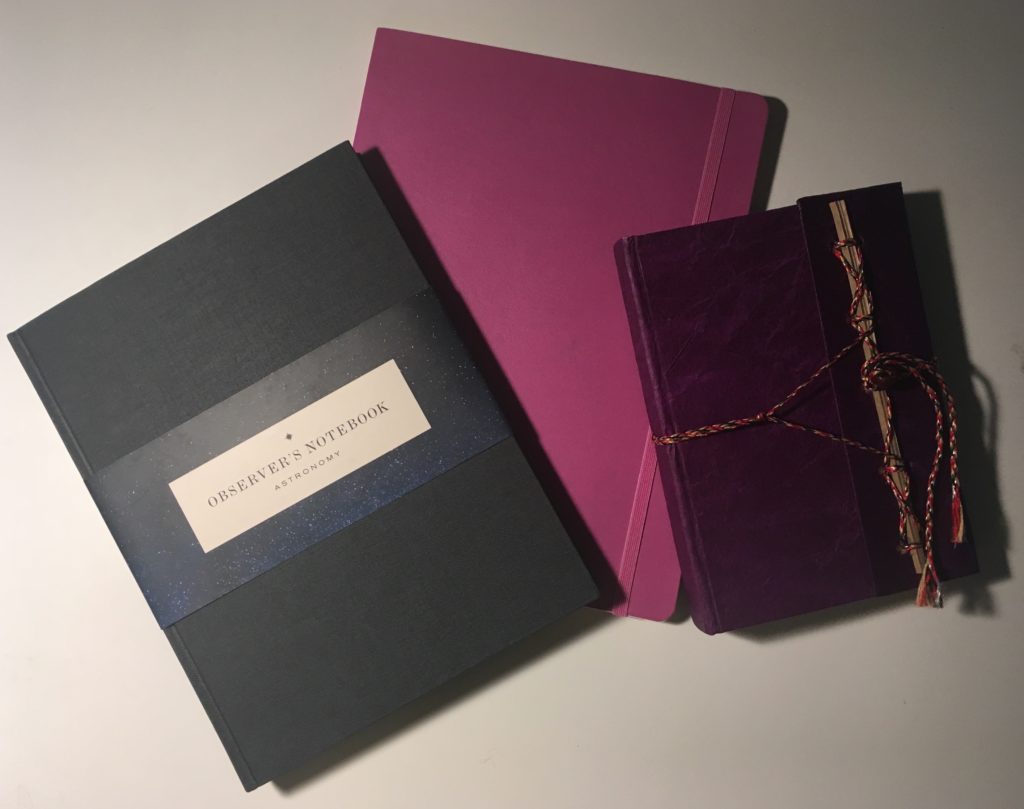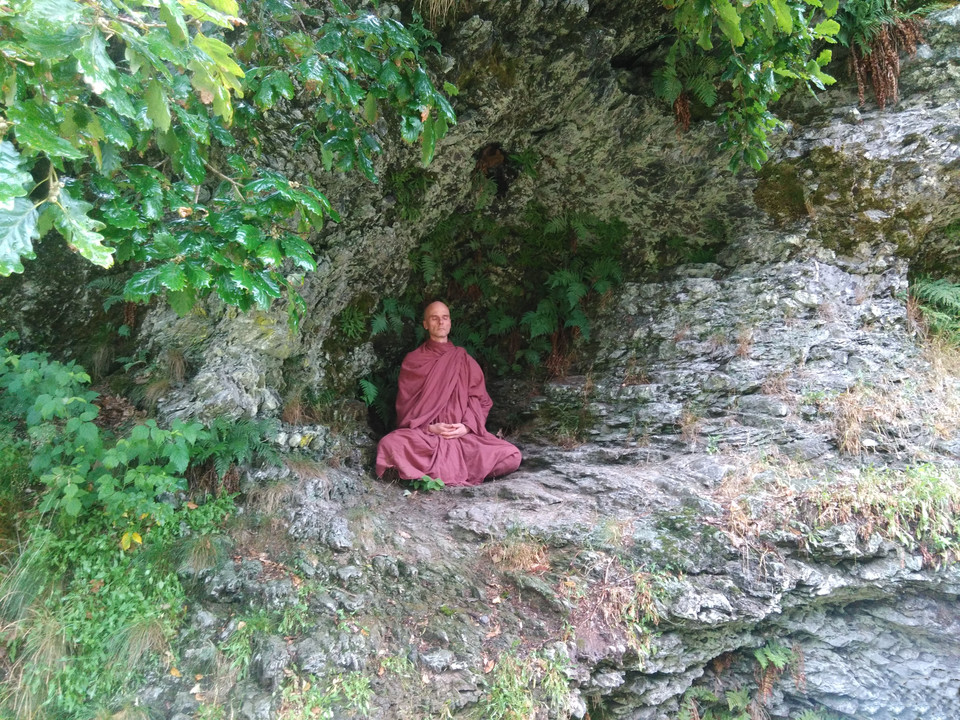There’s More To It Than That
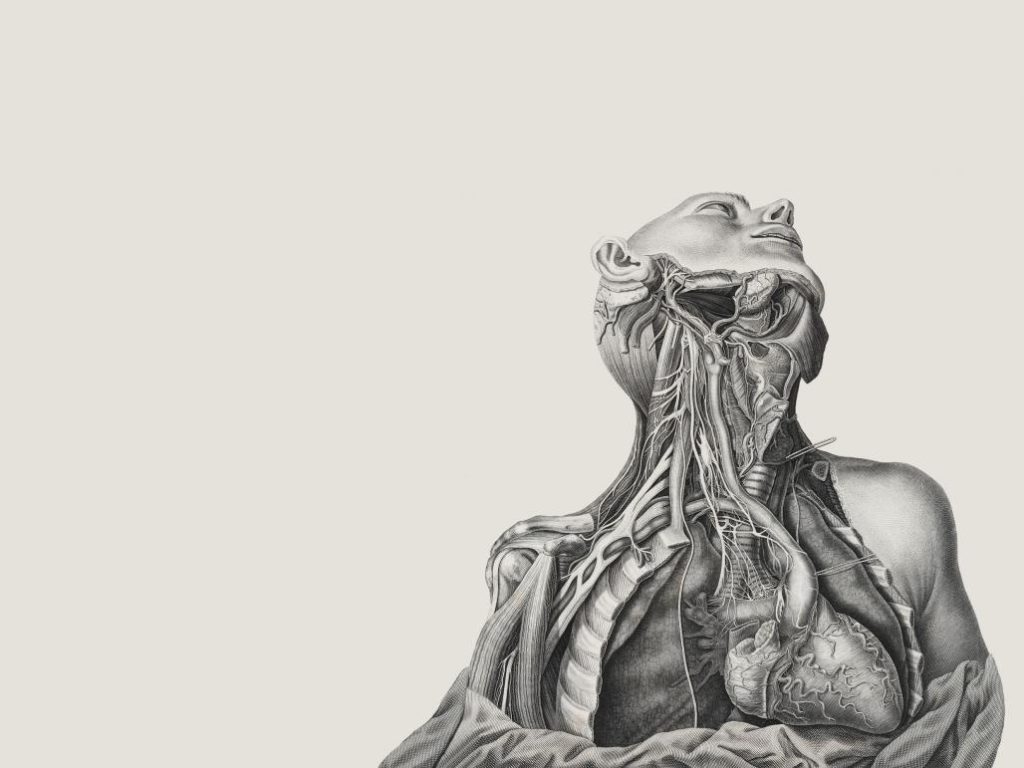
From Ajahn Sucitto’s How to Approach Mindfulness of Body: “Mindfulness of Body is held to encompass all states that give rise to wisdom.
“In mindfulness of body we are not just looking at outward form or anatomy, but the energetic sensitivity of the body as a sense organ, the body as a feeling experience, and the body as something that has an intelligence that begins to sense what’s happening at the surface of the skin — that’s its job. It senses the feeling of safety or well-being. And also it senses what’s happening internally — in terms of the health, the tensions, what’s happening in the organs, vitality, inner well-being, ease, comfort…
“But really, most of these body sensations — for everyone — are not always that good. As far as I can sense in my own body, there is always something painful going on. [laughs]
“These are sensations: painful, disagreeable, or something that one just has to kind of bear with — it’s too hot; it’s too cold; there’s an ache here; there’s a twinge there. That’s the deal with sensations. [more laughter] Occasionally, you get some good stuff, too. But generally it’s not that great. Particularly when you sit still — it’s definitely not great.
“But there’s more to it than that. There’s also energies — the vitality of the body, we could say. And of course, as meditators, this is where you have a big advantage over people who don’t meditate, because when you tune into the breathing, you tune into the fundamental vitality, energy, source of life. So that’s a big, big thing.
“And that — that’s bigger than sensations….
“Mindfulness of breathing is not just a body sweep, it’s an energetic body cleansing and steadying. And it has profound effects on the tonality of the citta [heart/mind] — it feels steady; it’s no longer rushing, jumping, stuttering, stalling; it’s actually steadied, smoothed. And there’s a certain beauty to it.
“If you like, you can say that the body is within awareness. The material body is in the immaterial.
“It’s often the case that people imagine that citta is some kind of quality that’s deeply within — and surely that’s often where we find access to it. But as it becomes more steady and complete, we begin to sense it pervading and suffusing the entire being, and gradually we begin to recognize this very sense of having a body itself is purely constructed.
“And then the body is not really a problem. There are sensations, but that’s not really what you’re focusing on. You’re focusing on the big picture. And the sense of ease that’s with that.”
There’s more. Click here to listen.
What We Feel in Our Body…
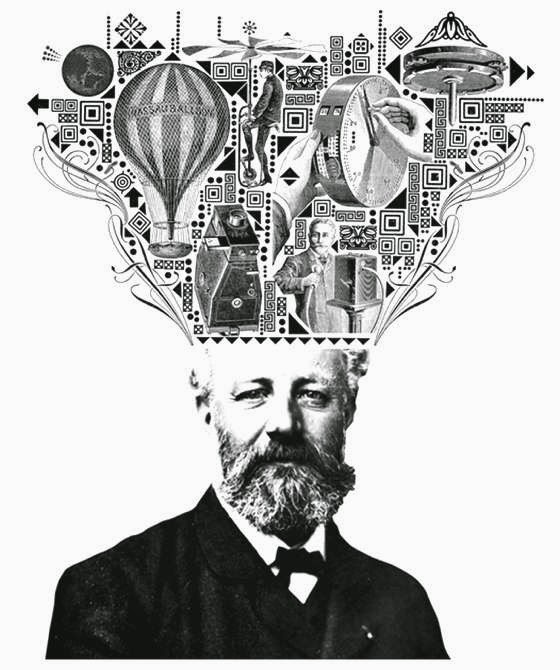
I really had a great time teaching the first Study & Practice Class last night, which was an overview of the Satipatthana Sutta. (Who knew THAT could be so much fun!?!)
Next week the class will focus on Mindfulness of Body, so in preparation, I offer this lovely little talk (just 21 minutes long) by Ajahn Sucitto — on How to Approach Mindfulness of Body — which begins:
“What we feel in our body becomes what we feel in our mind…
“Now the word ‘mind’ is problematic. Since about the time of Descartes, ‘mind’ went up into the head. But then gradually we’ve been pushing it and widening the boundaries ever since. The last hundred years or so it came back and encompassed the heart and it became ‘psyche,’ the ‘unconscious,’ the ‘collective unconscious’…and it’s continuing to develop and now we have something coming close to the Buddha’s term: citta — which means awareness, spirit, heart, mind, intelligence… all these things. And what we experience psychologically, what we experience emotionally…that is also mind — affected mind.
“The primary quality of citta is just the sense of knowing, sensing, being aware. And then there are various colors that come into that: the emotional tones, intentions, trembling, firmness, and so on.
“So, when you come into your body with awareness, then you are able to bring the effects of steadying, of calming, of easing — into the mind without any intellectual effort. Just by placing awareness into something that already is comfortable, steady, then the mind becomes that way.
“The topic then is how to establish this presence in the body….
***
Yes, indeed! Listen here.
Not What to Contemplate, but How
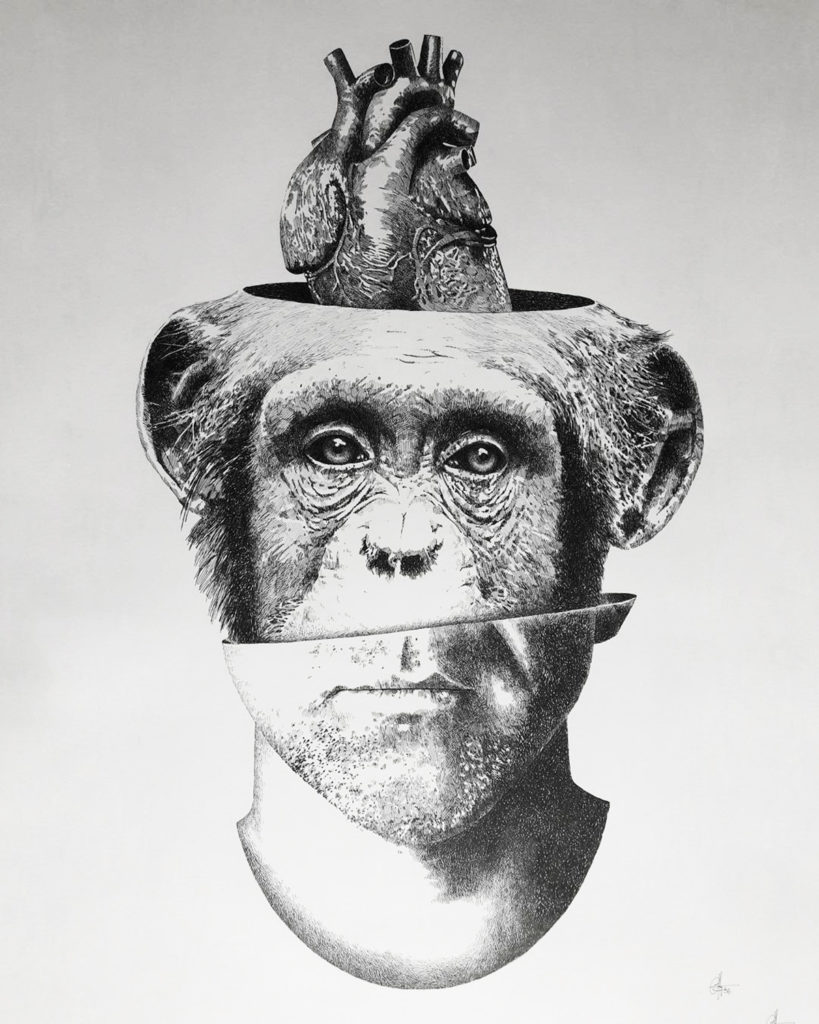
I’m still working on final preparations for the Satipatthana Study & Practice Class that starts tomorrow night, so for today’s post I’ll just share these words from Bhikkhu Bodhi:
“The Satipatthana Sutta does not recommend a single meditation subject nor even a single method of meditation.
“Its purpose, rather, is to explain how to establish the mode of contemplation needed to arrive at realization of Nibbana.”
Exploring the Nature of Mind
So at last we begin on Spirit Rock’s Advanced Practitioners Program, which kicks off with a 9-day retreat starting April 15 on the Nature of Awareness, taught by Phillip Moffitt, Guy Armstrong, Susie Harrington, and Brian Lesage.
I know we’ve begun, because I’ve just received the very first homework assignment!
Here’s what they say:
“The APP program is designed for practitioners who already have a strong connection to the Dharma and are looking to deepen that connection. In light of this, we invite you to take some time to reflect on your current connection to the Dharma in these particular ways:
- How has your practice transformed your life and the communities you live in so far?
- How is your practice connected with the larger context of issues happening within our society and the world?
- What continues to motivate you and inspire you to practice?
- What are your aspirations for this APP program?
“For our first retreat, we will be offering different teachings on how to understand the nature of mind. To prepare for the retreat, we invite you to reflect upon two different ways of understanding the nature of mind — or more precisely, the nature of consciousness — that are found in Theravada… ”
***
The suggestion is that we write our responses in a journal. And so it begins.
But first — I have to decided on the right journal!
(Ah yes. Already an exploration into the nature of this particular mind.)
Stay tuned.
Alongside Whatever Other Responsibilities…
Interested in joining my Study and Practice Class on the Satipatthana Sutta, but don’t live in St. Louis, or don’t have time on Tuesdays, or just can’t make it for some other reason?
Here’s another option:
Get the book — Satipatthana Meditation: A Practice Guide, by Bhikkhu Analayo — then use this link to Analayo’s guided instructions (freely available from the publisher) to do your own study-and-practice course, either by yourself or with a couple of friends!
This is not exactly what we’ll be doing in the class I’ll be teaching, but it’s what Analayo himself suggests in the introduction to his text:
“I would recommend using the book and recordings to develop the practice step by step. This could be done, for example, over a period of seven weeks. In the early discourses the number seven functions as a symbol of a complete cycle of time.
“In preparation for this cycle of self-training, I recommend reading the first two chapters. Following such preparation, perhaps each week it would be possible to find time to study one of the chapters on the seven main contemplations, and during the ensuing days of the week cultivate its actual practice. In this way, alongside whatever other responsibilities we might have, it would be possible to complete a course of self-training within a period of seven weeks.
“Following such a course of training, we might then continue letting the practice of all four satipatthanas become more and more an integral part of our life. The basic pattern of mindfulness practice remains throughout: being in the present, knowing what is happening, and proceeding accordingly.”
***
(That’s Bhikkhu Analayo in the photo above. While you’re listening to him give the guided instructions, you could imagine yourself sitting right there with him!)
Come On In!
 I’m busily getting ready for the new Study and Practice class I’ll be teaching on the Satipatthana Sutta — which will meet in this very sweet room, by the way!
I’m busily getting ready for the new Study and Practice class I’ll be teaching on the Satipatthana Sutta — which will meet in this very sweet room, by the way!
To introduce these teachings, I’ll use this quote from Bhikkhu Bodhi:
“The discourse generally considered to offer the most comprehensive instructions on the meditation practice is the Satipatthana Sutta….
“The Pali texts treat meditation as a discipline of mental training aimed at a two-fold task: training the mind and generating insight.
“The still mind, calm and collected, is the foundation for insight. The still mind observes phenomena as they arise and pass away, and from sustained observation and probing exploration arises ‘the higher wisdom of insight into phenomena.’
“As wisdom gathers momentum, it penetrates more and more deeply into the nature of things, culminating in the full and comprehensive understanding called enlightenment.”
***
Here’s how the class will go:
- We begin each evening with a short “arriving-in-the-room” silent meditation. (approx. 5 min)
- After we sit, I give an introductory talk on the meditation topic of the evening. (approx. 25 min)
- After the talk, I lead a guided meditation on that practice. (approx. 30 min)
- After the practice, I open for a discussion/Q&A on the topic. (approx. 30 min)
***
First class meets Tuesday, March 5, 7:00 to 8:30 pm. Then every Tuesday for the next 6 weeks. Want to join in? It’s not too late. Send me an email.
Generosity and Beauty and Basicness
The following excerpt is from Handy Tips on How to Behave at the Death of the World, by Anne Herbert, originally published in Whole Earth Review (1995) and currently reprinted in The Sun magazine:
“Sometimes it comes in a dream, and sometimes in one more newspaper headline. And then you know. With your cells and past and future you know. It’s over. We are killing it all and soon it will all be dead. We are here at the death of the world — killers, witnesses, and those who will die. How then shall we live?
“Probably good to tell truth as much as possible. Truth generally appreciated by terminal patients and we all are.
“Good to avoid shoddy activities. You are doing some of the last things done by beings on this planet. Generosity and beauty and basicness might be good ways to go. Avoid that which is self-serving in a small way. Keep in mind standing in for ancestors including people who lived ten thousand years ago and also fishes. Might be best to do activities that would make some ancestors feel honored to be part of bringing you here.
“… Be in radical alignment with particular forms of aliveness being smashed. Particular species, human creatures, styles of living are being obliterated brutally now. In as much as we all are going to die fairly soon, the stylish thing to do is to align with one of the lifeforms and help it be itself as long and strong as possible.
“Eschew blandness. Eschew causing others pain. We are all the targets so wear bright colors and dance with those you love. Falling in love has always been a bit too much to apply to one person. Falling is love is appropriate for now, to love all those things which are about to leave. The rocks are watching, and the squirrels and the stars and the tired people on the street. If you love them, let them know, with grace and non-invasive extravagance. Care about the beings you care about in gorgeous and surprising ways. Color outside the lines. Practice random kindness and senseless acts of beauty. This is your last chance.”
I, Too, Have Been Flooded
 Ajahn Sucitto:
Ajahn Sucitto:
“We pick up that our hearts will probably quite easily come into the wish for the welfare of others:
“May they be happy.
“May they be cherished.
“May they be free from harm and suffering.
“May their practice bear fruit.
“Bring this to mind.
“Then bring into that field: the people one is spending time with, one’s relatives, and associates — with all the difficult bits —
“I just wish them well, that’s all.
“I’m not expecting them to be fantastic. Or for everything to be really swinging along between us. I just wish them freedom from harm.
“I can do that.
“And then:
“I, too, have been flooded with behaviors and actions that were inappropriate, not worthy, not welcome, wrong time…
“I ask for forgiveness.
“There’s the flush that one gets, the grandiosity that can come out of feeling one is right; the lack of straightforwardness that can come out of feeling one is wrong, so one never dares say the truth, and how confusing that is; the confusion that can arise from thinking one can know what someone else is thinking, what they’re up to, and then having an opinion about it….
“Haven’t we all done this?
“This — is forgiveness.”
***
(from the last few minutes of Ajahn Sucitto’s talk: Body — the Last Outpost of Sanity. Click here to listen.)
Mamma Knows the Way
For today, I’m taking a page (literally) from my Sweet-Metta Dhamma-Mamma:
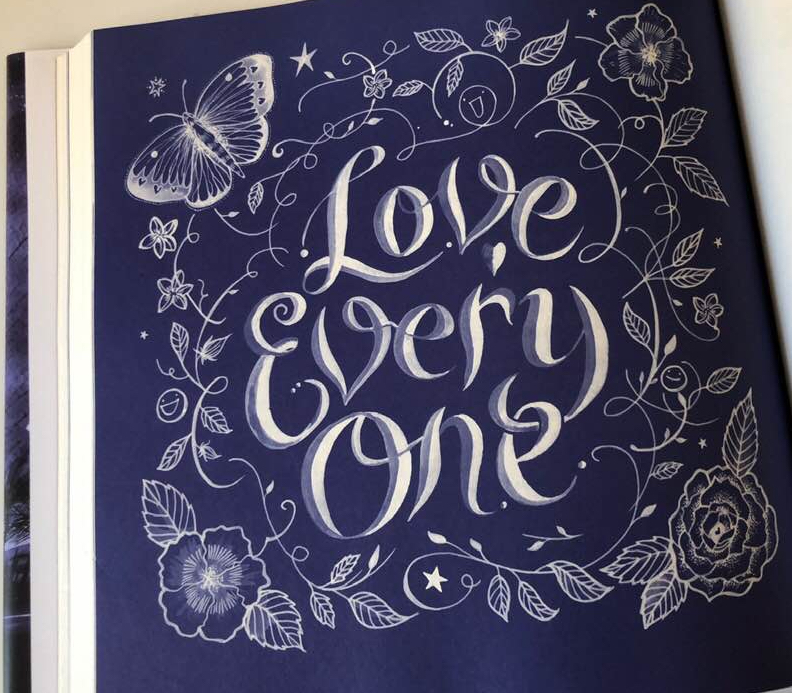 (from Walking Each Other Home, by Ram Dass & Mirabai Bush)
(from Walking Each Other Home, by Ram Dass & Mirabai Bush)
Now, If Poetry Can Help…
I’ve just learned that Tony Hoagland — whose poetry I’ve had a love/hate relationship with since about the time I started this blog — died this past October, from pancreatic cancer. He was sixty-four.
In The Beautiful Rain
by Tony Hoagland
Hearing that old phrase “a good death,”
which I still don’t exactly understand,
I’ve decided I’ve already
had so many, I don’t need another.
Though before I go
I wish to offer some revisions
to the existing vocabulary.
Let us decline the pretense
of the hyper-factual: the
myocardial infarction; the arterial embolism;
the postoperative complication.
Let us forgo the euphemistic:
the “passed away”
and “shuffled off this mortal coil,”
as worn out and passive as an old dildo.
Now, if poetry can help, it is time to say,
“She fell from her trapeze at 2 am
in the midst of a triple backflip
in front of her favorite witnesses.”
Let us say, “In broad daylight,
Ms. Abigail Miller
conducted her daring escape
before life, that Crook,
had completely picked her pocket.”
It is not too late from some hero
to appear and volunteer
in the name of setting an example:
Let us say, “He flew with abandon,
and a joyous expression on his face,
like a gust of wind
or a man in a necktie
from the last dinner party he would ever have to attend.”
To say, “He was the egg
that elected to break
for the greater cause of the omelet;
the good piece of wood
that leapt into the fire.”
“Through grudging at first,
he fell like the rain,
with his eyes wide open,
willing to change.”
***
May it be so, Tony. May it be so.

